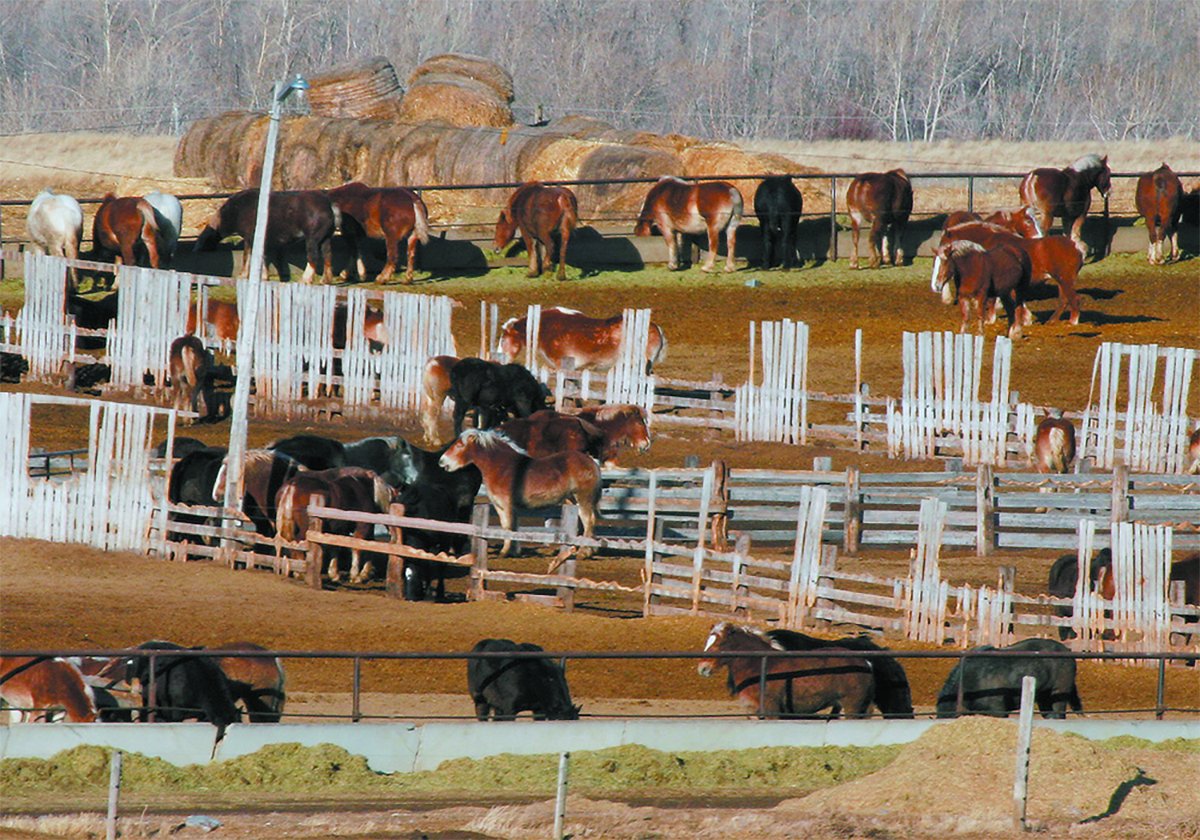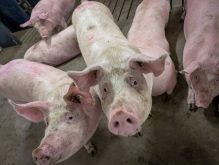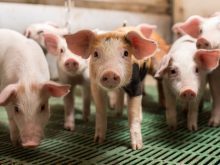If meat and bone meal derived from specified risk material is banned from animal feed, it could end up as concrete.
West Coast Reduction Ltd. is building a new facility in Calgary beside its rendering plant to handle specified risk material. After the tallow is removed, the remaining SRM would either be shipped to a landfill or sent to a cement company such as LaFarge Canada Inc., which would incinerate it and add the ash to cement mixes.
“Our company has positioned itself to basically process all the SRM material in B.C., Alberta and Saskatchewan,” said West Coast president Barry Glotman.
Read Also

Canada’s slaughter horse industry lacks transparency
The lack of clear reporting and public access to data keeps the industry largely hidden, leaving questions about humane treatment and traceability unanswered.
Specified risk materials are considered the main site of BSE infective prions and include cattle brains, spinal cords, nerve tissue, glands and the small intestine. They are removed at packing plants from animals older than 30 months to prevent them from entering the human food chain.
Once removed and separated, the material is rendered into tallow, meat and bone meal. It is still allowed in hog and poultry feed mixes as a protein supplement.
Under current regulations it does not have to be labelled as being derived from SRMs.
A proposed regulation would remove these materials from animal feed. It has been under discussion for nearly a year.
“The speculation is that Canada is waiting for the United States to act since it had its own case of BSE reported earlier this year,” Glotman said.
“There is talk that whatever rule is enacted in Canada is going to be complementary to whatever rule is enacted in the United States.”
The U.S. Food and Drug Administration said at the end of August that its updated rule on ruminant-to-ruminant feed restrictions could be announced later this fall.
Steve Sundlof, director of the FDA’s Centre for Veterinary Medicine, told a news conference the rule proposes removing specified risk material from all animal feed, as well as prohibiting poultry litter, plate waste and bovine blood from feed and dietary supplements. Canada does not permit chicken manure or restaurant waste in animal feed.
Both countries are also pondering the next step: how to dispose of the material in an environmentally friendly way.
It is estimated Canada produces 2,670 tonnes of SRMs per week, including dead stock.
“For our calculations we optimistically assumed 100 percent dead stock pickup, which currently doesn’t happen,” said Nancy Facklam, a research scientist with Alberta Agriculture.
“We get about 10 percent.”
She said the government is reviewing numerous proposals to treat the material as a commodity rather than waste.
Private industry suggests using the material as an ingredient for biodiesel, gas and concrete.
Proposals to break down the material include alkaline hydrolysis, where an alkaline substance of pH 14 is heated and cooked.
“This process has been validated to eliminate prion infectivity but the effluent from the process is pH 10, which is hard to get rid of,” she said.
Colorado State University’s school of veterinary medicine uses this system to dispose of deer and elk carcasses. The gel-like effluent is then composted.
The thermal hydrolysis process that was developed in Alberta uses increased pressure, heat and time and is awaiting validation to show it destroys prions. It breaks down waste into amino acids and peptides.
The resulting material resembles molasses and can be dehydrated into a dry material for fertilizer resembling coffee grounds. The liquid form could be fractionated into fatty acids, minerals, amino acids and glycerol, which all have commercial uses.
“They call it liquid cow,” Facklam said.
The material could also be further incinerated in a cement kiln at extremely high temperatures and the resulting ash blended with cement.
This cement blend offers a reasonable short- term solution because it uses rendering and cement facilities already available.
While using the ash seems feasible, the government wants to continue encouraging groups to be innovative.
The Europeans incinerate SRMs at temperatures as high as 850 C. The incidence of BSE was considerably higher and the public demanded infective material be destroyed.
“We don’t have as much BSE and we are in the fortunate position of having learned from the U.K. experience,” Facklam said.

















